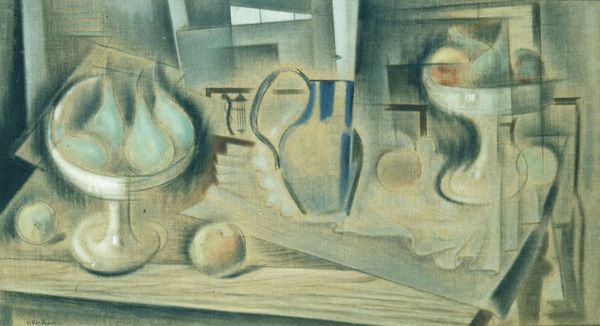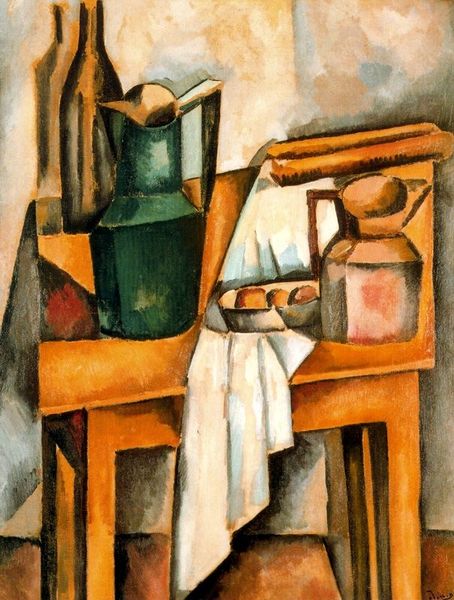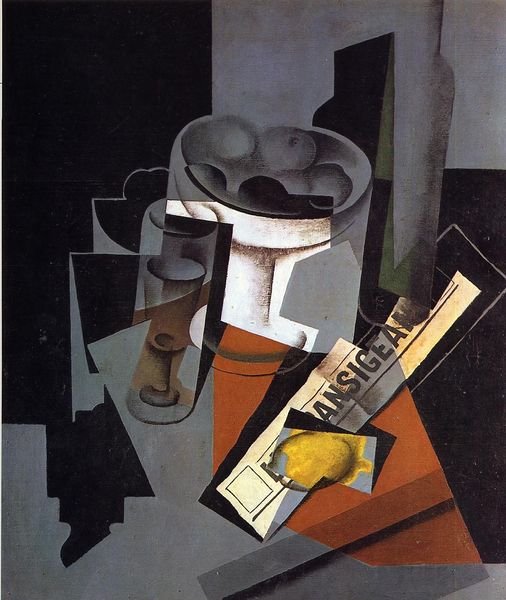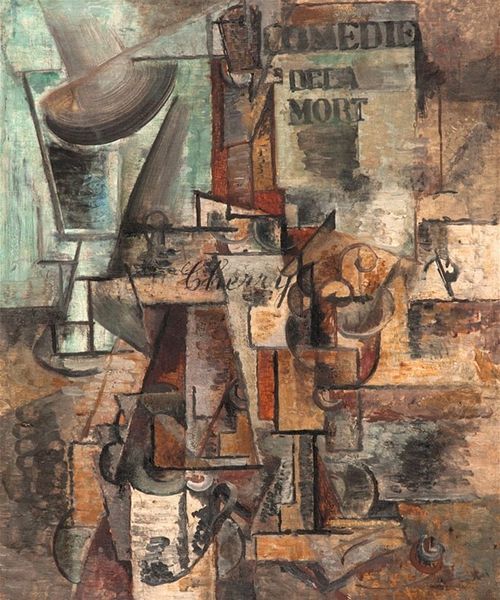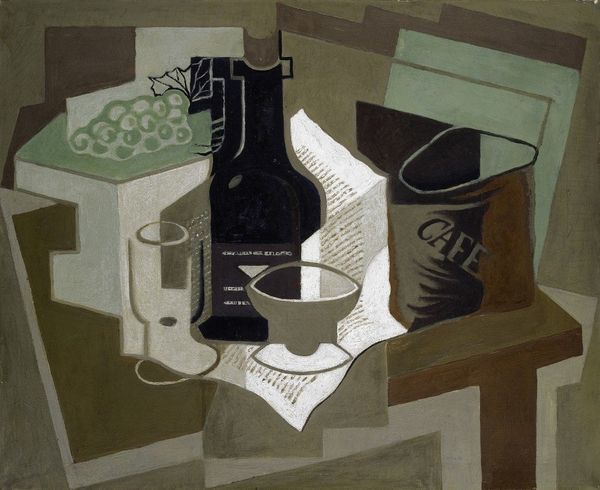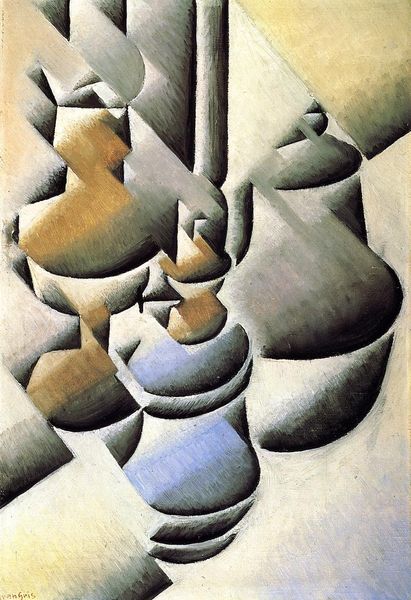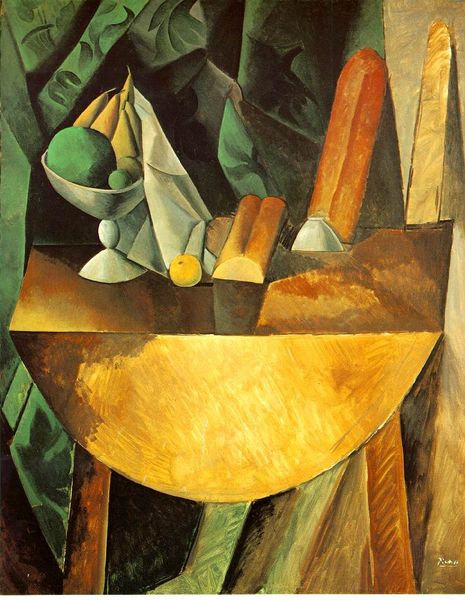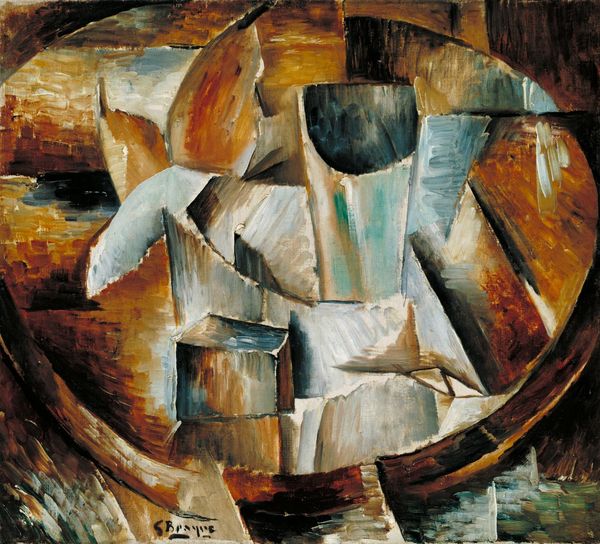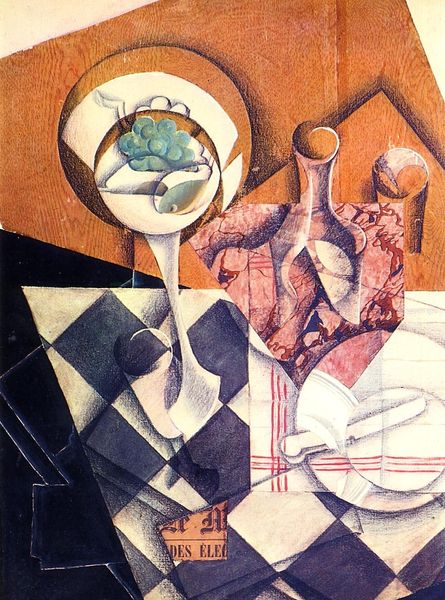
oil-paint
#
cubism
#
oil-paint
#
oil painting
#
modernism
Copyright: Public domain
Louis Marcoussis's "Nature morte cubiste", painted in 1914, is rendered in muted browns and creams. The objects depicted—bottle, glass, dice, and book— speak to the quiet, contemplative life. Observe the dice, seemingly scattered yet deliberately placed. Dice have long been associated with chance, fate, and risk. In ancient Rome, they were used for divination, their outcome believed to reveal the will of the gods. Yet, these humble objects also speak to more human concerns, such as our timeless attempt to predict or influence what is yet to come. The dice are a recurring symbol in art history. We can see the same motif resurface, for example, in Renaissance allegories of Fortune. It is a visceral reminder of the capriciousness of life. The geometric arrangement and fracturing of forms can also evoke a sense of instability, mirroring our subconscious anxieties of the unknown. In a way, the artist has captured a profound meditation on human existence. The symbol persists, a testament to our enduring fascination with chance, and the cyclical patterns of anxiety and anticipation.
Comments
No comments
Be the first to comment and join the conversation on the ultimate creative platform.

